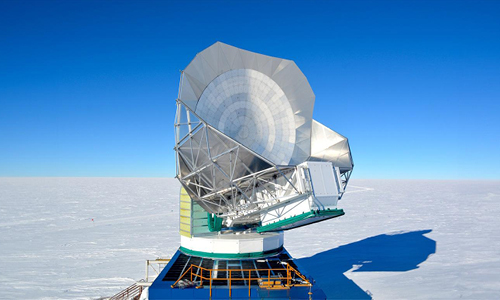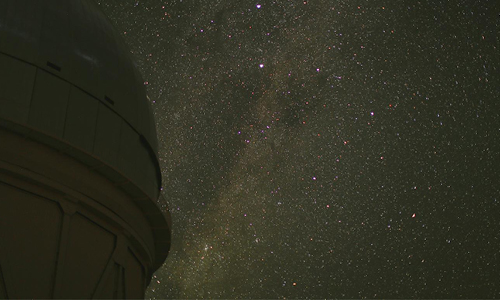|
|||||||||||||||||||||||||||
| Eclipsing the rest in space observation | ||
| Astronomers and space enthusiasts alike, from Newfoundland to Mexico, can catch a total solar eclipse on Monday, April 8, when the moon blocks out the sun. While this eclipse will be visible to anyone near its path of totality, UChicago scientists are collecting data on more obscure and distant astronomical phenomena. This issue of µChicago explores how these researchers are integrating improved observational data—gleaned from giant telescopes and megapixel cameras—with new understandings of the universe. | ||
| A “treasure map for cosmologists” | ||
|
|||||||||||
|
New data analysis from the South Pole Telescope in Antarctica offers a detailed
“treasure map” of light that gives cosmologists crucial insight into the formation of the universe. After a UChicago-led camera upgrade in 2017, researchers recorded gravitational distortions as this light—called cosmic microwave background—traveled across space. The newest data spans only a few months in 2018, but it took years to analyze. While the data reaffirms current theories of matter formation, the unprecedented view made possible by the new camera (known as SPT-3G) also uncovers new questions.
|
||
| Atmospheric anomalies and strange supernovae | ||
|
||||||||||||||||
|
||||||||||||||||
|
||||||||||||||||
|
||||||||||||||||
|
|||||||||||||||||||||||||||
| Light on a dark matter | ||
|
|||||||||||
| Results from the Dark Energy Survey confirm the standard model of an accelerated, expanding universe, but they don’t rule out more complex theories about dark energy. With a Fermilab-built camera mounted on a four-meter telescope, a consortium of scientists spent six years mapping supernovae, or explosions of stars, to measure dark energy density over time. These “pioneering” data collection techniques “will be directly beneficial for the next generation of supernova surveys,” says Rich Kron, director of the survey and a Fermilab and UChicago scientist. | ||
| Want to learn more? The ongoing Arthur H. Compton Lecture Series zooms in on the different types of telescopes used by astrophysicists to observe and interpret cosmic data. | ||
| In case you missed it | ||
|
||||||||||||||||
|
|||||||||||
|
|||||
|
|





